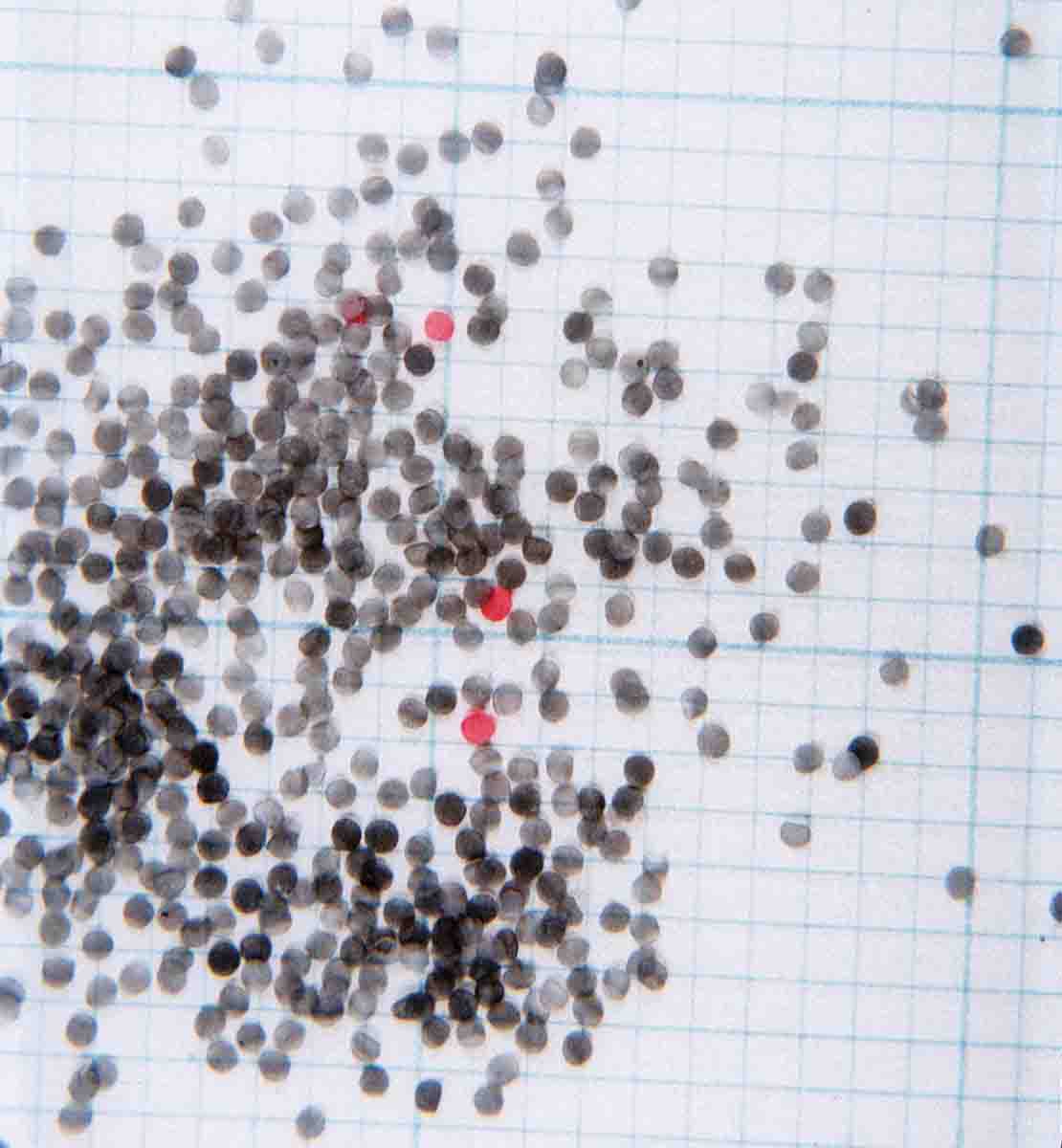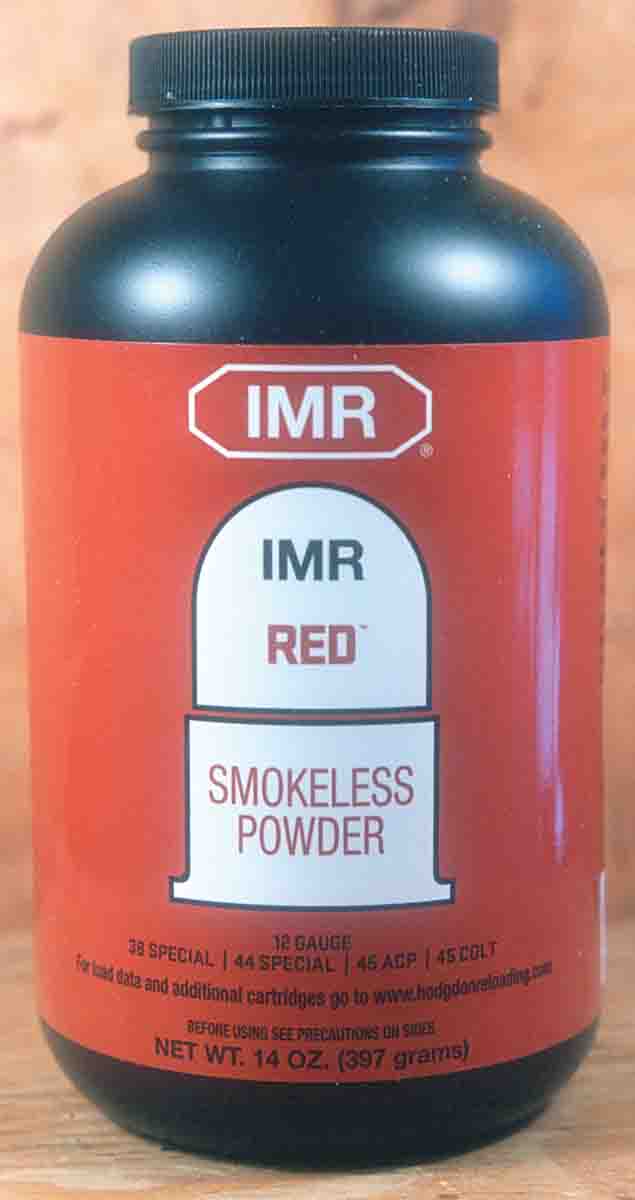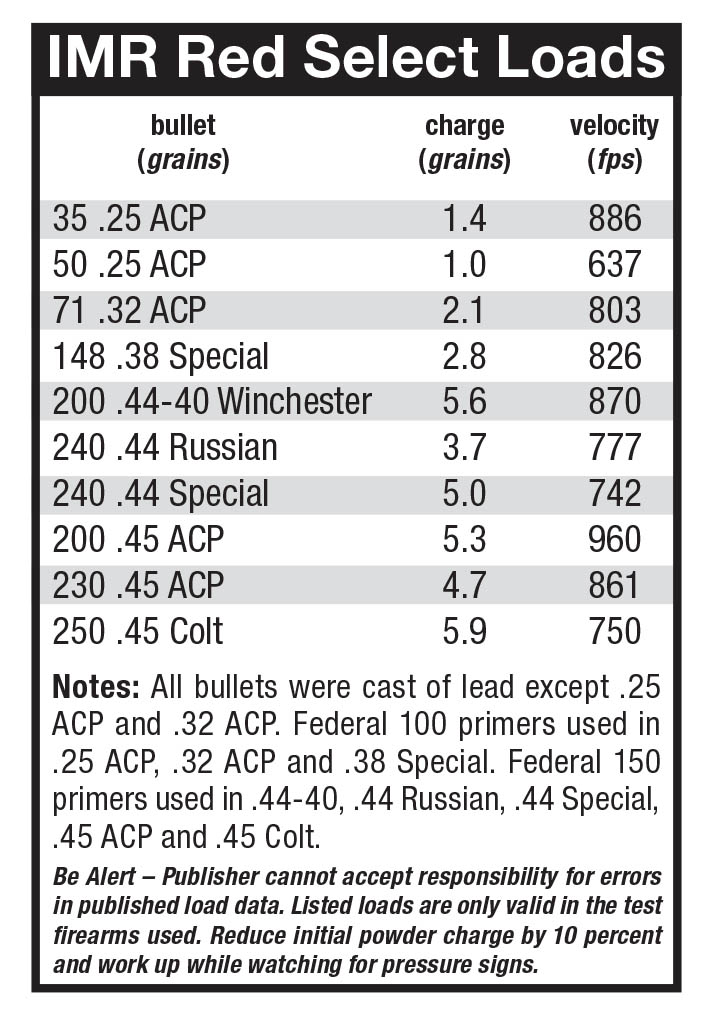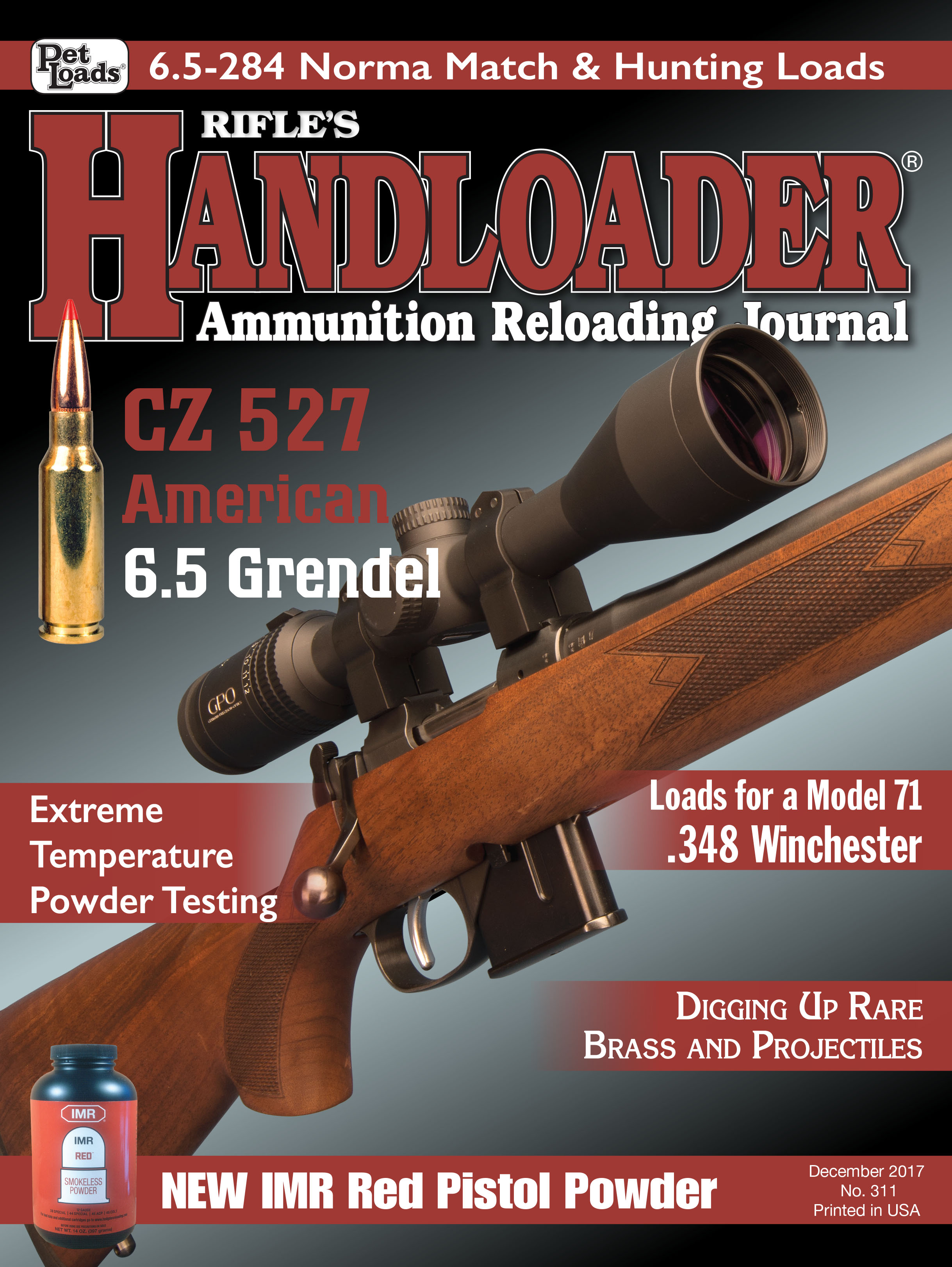Propellant Profiles
IMR Red
column By: R.H. Vandenburg, Jr. | December, 17
Continuing a look at IMR’s new series of powders – IMR Target, IMR Red, IMR Green, IMR Blue and IMR Unequal – let’s turn our attention to IMR Red. Obviously intended to compete with Alliant’s Red Dot, IMR Red’s primary usage will be as a 12-gauge target powder for 7⁄8- and one-ounce shot charges, but with broad acceptance in low-pressure handgun cartridges, principally with lead bullets.
IMR Red is a double base, extruded powder cut into very short lengths, or flakes. The diameter is .058 inch and length is .004 inch. The nitroglycerin content is 34 percent. Bulk density is given as .491 g/cc. As with its counterpart, there are red flakes scattered throughout as an instant identifier. Chemically, the entire new series of IMR powders differs from other powders of similar purpose in the elimination of several environmentally unfriendly additives, thereby adhering to the new REACH standards for powders. This “green” approach to powder manufacturing is the wave of the future. These new powders are manufactured in the General Dynamics facility in Ontario, Canada, where most IMR powders are made.
One of the interesting things about IMR Red, IMR Green and IMR Blue is that they are volume- for-volume replacements for Alliant Red Dot, Green Dot and Blue Dot, respectively. They are not weight-for-weight

Confusing, perhaps, but in the “Relative Burn Rate” chart in the Hodgdon Basic Reloading Manual (2017), Red Dot is listed as 7th fastest, with IMR Red as 10th and IMR Target as 14th fastest. In the same booklet on page eight, IMR Target is listed as faster burning than IMR Red. It is not unusual for powders to switch places when going from cartridge to cartridge, or especially when going from shotshell to metallic cartridge. In the few instances where published data exists for both IMR Red and Red Dot with the same bullet, IMR Red’s maximum charge usually weighs less. Of course, different cases, primers and guns all contribute to this, but the message is clear: Use only IMR-published data.
All that said, this wouldn’t be much of a column if I relied only on published data, because there is precious little IMR Red data yet available for metallic cartridges. The label on each can of IMR Red highlights its use in the 12 gauge, .38 Special, .44 Special, .45 ACP and .45 Colt. Fine examples, to be sure, but IMR Red data was not available for the .44 Special on the IMR Reloading website when this was written. Careful improvising, starting low and working up in small increments, was required.
To look at specific loads I’ve been able to test, let’s begin with a common 12-gauge, 23⁄4-inch target load: Remington STS hull; Remington 209P primer; Remington TGT12 wad; an ounce of lead shot; 17.0 grains of IMR Red; 1,150 fps; 8,300 psi. We can reach 1,200 fps with 18.0 grains of IMR Red at 8,700 psi and 1,250 fps with 19.0 grains at 9,500 psi.
Moving to metallic cartridges, I worked with several from .25 ACP to .45 Colt. Only .38 Special, .45 ACP and .45 Colt used actual IMR Red published data from the Hodgdon/IMR reloading website. The others were developed by me, and functioning and reliability – rather than maximum velocity – were the governing guidelines. In most cases where they differed, IMR Red powder charges were less than those published for Red Dot.
In developing an article on reloading the .25 ACP years ago, Red Dot was found to be an excellent choice with 50-grain bullets, producing small groups at the 7-yard testing distance. I was pleased to find that IMR Red performed just as well. I had settled on other powders for the .32 ACP but here, too, IMR Red performed well. Both of these cartridges are naturals for this new powder.
Moving to the .38 Special, my efforts were limited to 148-grain cast wadcutter bullets. IMR’s pub-lished maximum of 2.8 grains produced consistent shot-to-shot velocities and small groups at 25 yards. These are target – or perhaps Cowboy Action – loads at modest velocities and make great practice and plinking loads.

The .44 Russian is a fun cartridge, and IMR Red worked well with a 240-grain cast bullet. Modest powder charges and modest velocities are ideal for the Cowboy Action game, and here IMR Red shines.
As mentioned, the .44 Special is listed on the IMR Red canister label as well suited for the powder, but published data was not found on the IMR website. As it turned out, 5 grains under a 240-grain bullet gave excellent results for practice or target loads.
Now we get to actual IMR Red published data. In the .45 ACP, maximum loads worked out with both 200- and 230-grain cast bullets in a Colt Government Model. My preferred target load includes a 200-grain bullet, and the load shown at 960 fps may well be more than I’d settle for in Bullseye competition, but the load functioned flawlessly. The 230-grain load was equally good but better suited for general defense-oriented practice.
The .45 Colt load performed well, but the velocity was a bit disappointing due, no doubt, to IMR focusing on target shooting. To be fair, a slower powder would be preferable for a heavier load. For plinking and practice, this load performed quite well.
Reloaders will note that IMR Red, IMR Green and IMR Unequal are packaged in 14-ounce weights instead of the usual one pound. This is due to their light bulk density. They are also available in 4- and 8-pound canisters. IMR Target and IMR Blue come in one-, 4- and 8-pound containers.



